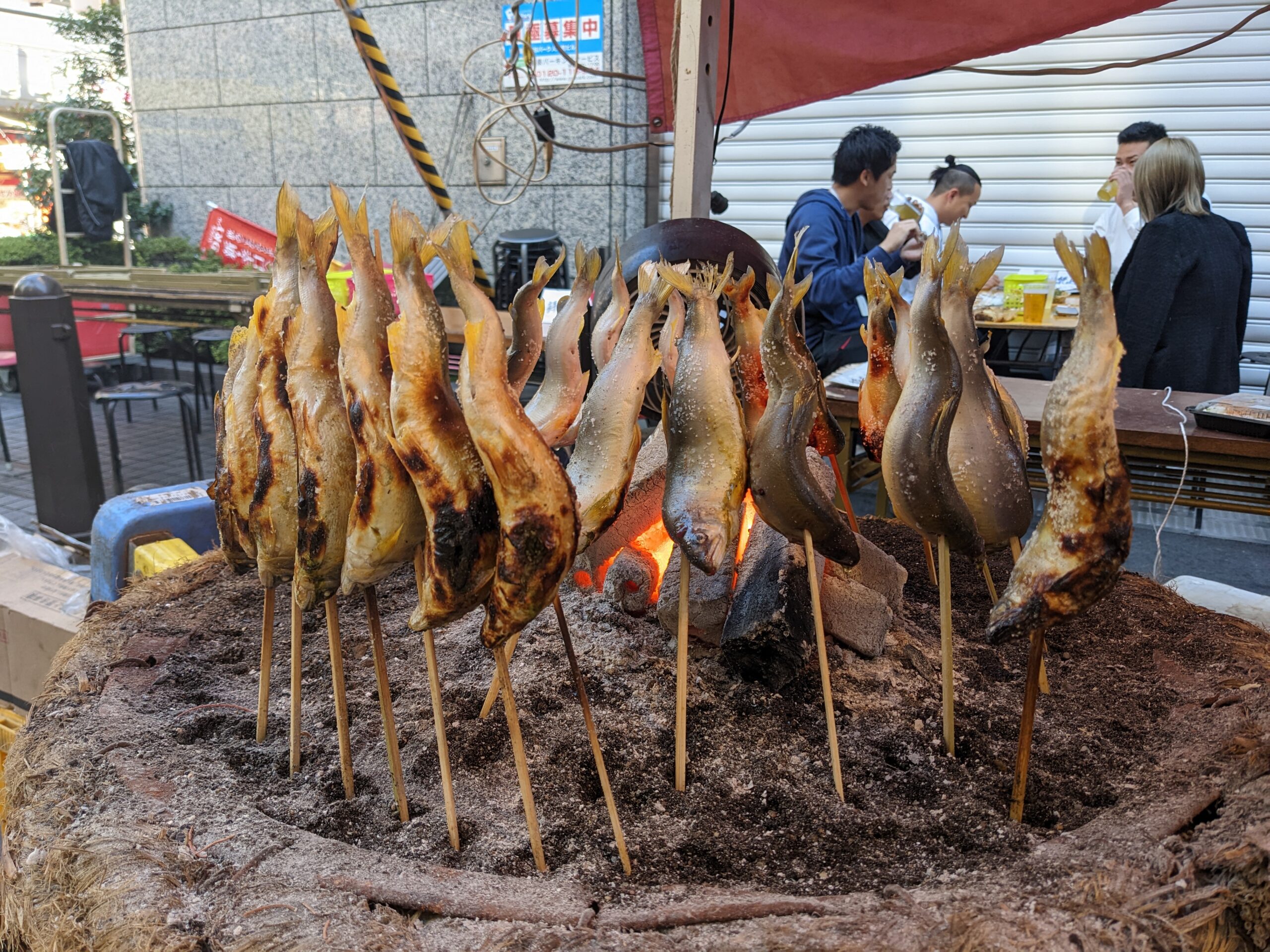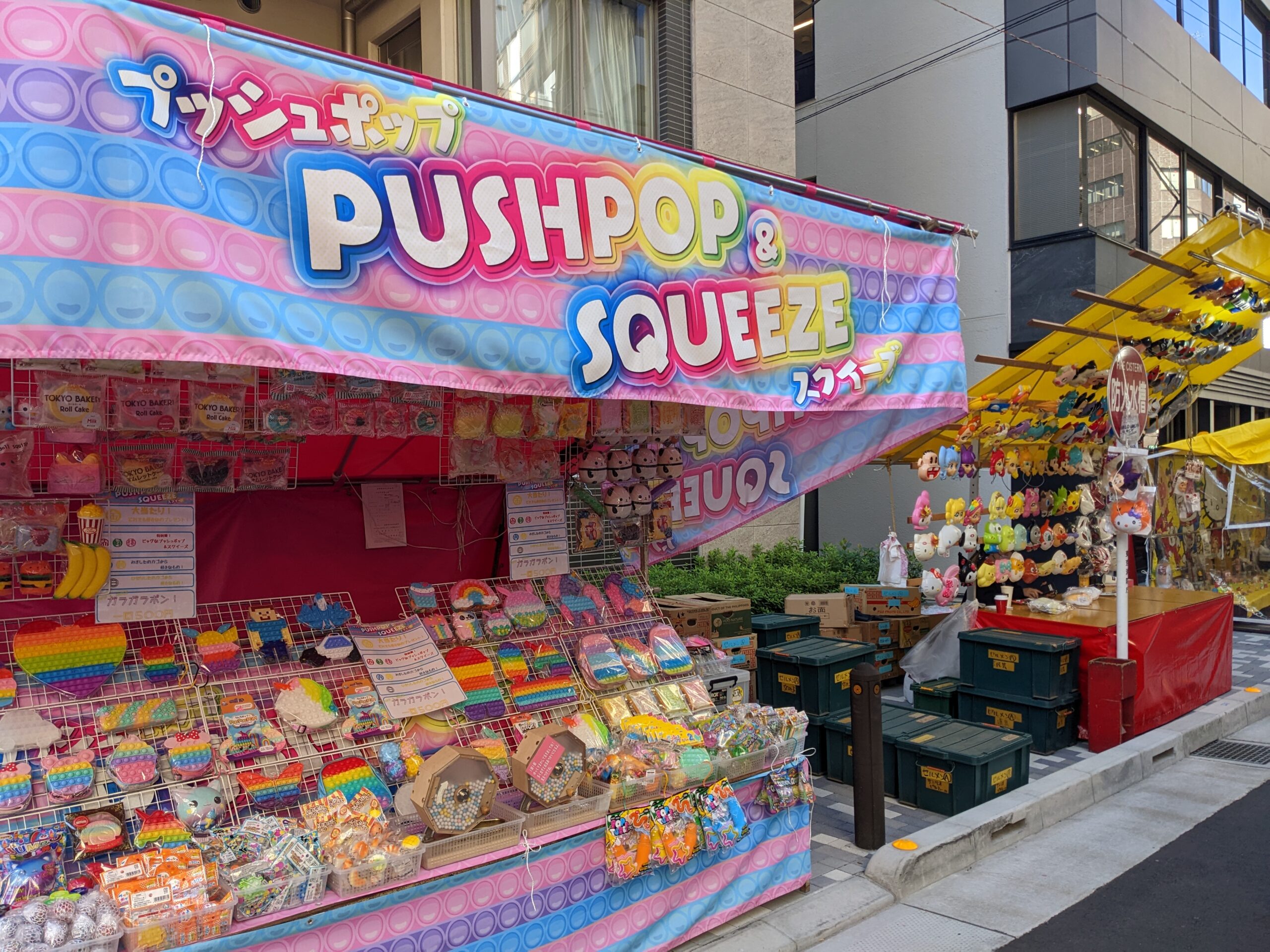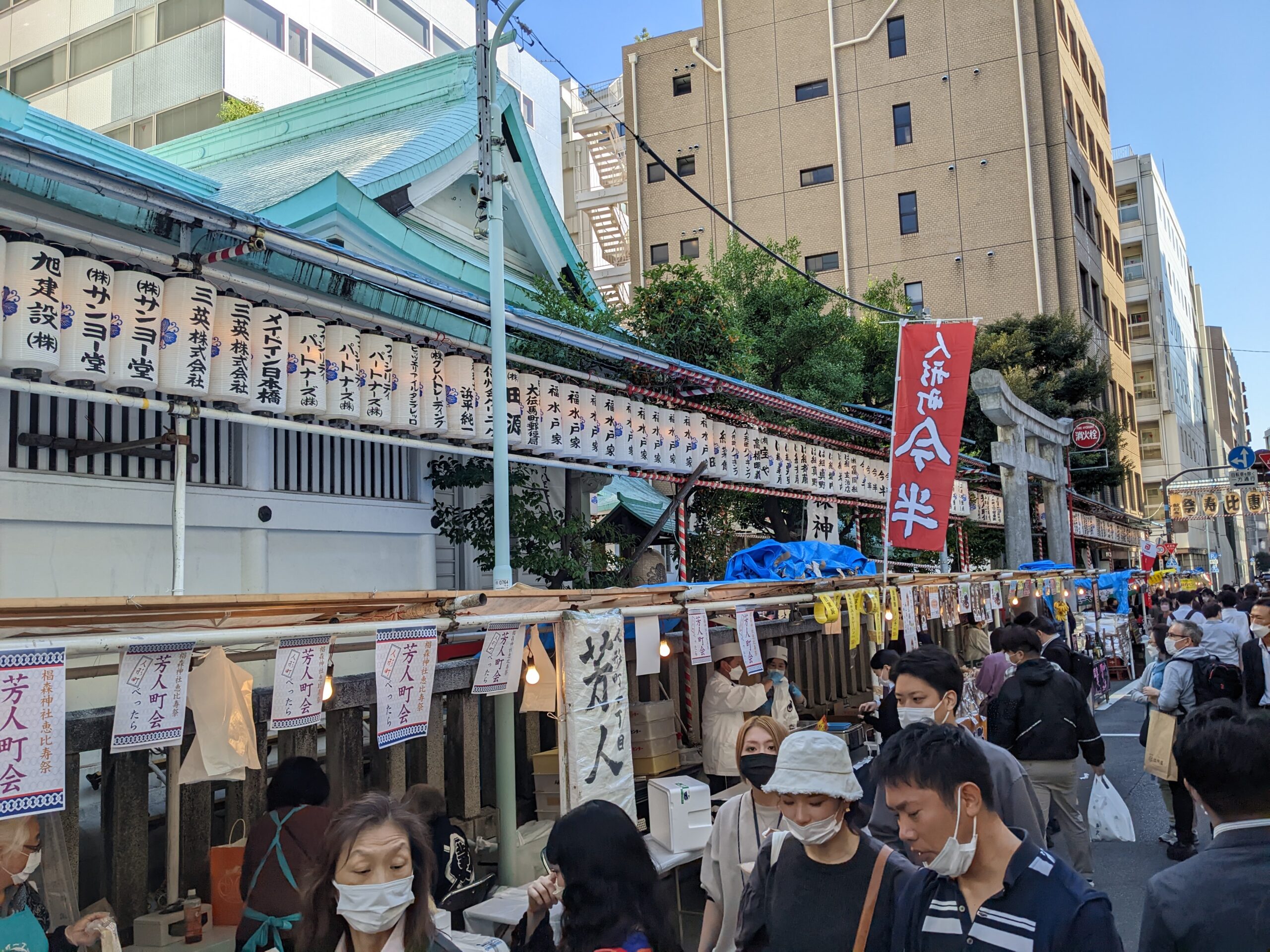Bettara is Back!
After a three year absence due to the pandemic, one of the longest running market festivals in Tokyo, the Nihonbashi Bettara Market festival, is back! The markets is a celebration of bettara, or more formerly bettarazuke, a semi-sweet pickle made by curing daikon in a mix of sake, sugar, salt, and rice kōji. The bettara is ready to eat after fermenting for a couple of days, the sticky mix it has been in not being wiped off. It is believed the name comes from the sticky leftover mix, bettari being a Japanese word meaning “sticky.”


Around 500 yatai stands, most serving food, including around twenty or twenty-five selling bettara and other pickles (it is hard to count as many are nearly one block long series of tables that all look alike), and a few more offering toys and entertainment for kids.


The main matsuri activities take place in front of Takarada Ebisu shrine (Nihonbashi Honchō 3-10-11) and below a giant paper lantern hung just for the event. And while there are plenty of food yatai nearby, the best food is always found a few blocks to the east in front of Suginomori Jinja (shrine, Nihonbashi Horidomechō 1-10-2) where some of the area’s more famous restaurants set up tables. The two most popular always seem to be Uokyū, which sells grilled fish marinated in miso and sake-kasu (sake lees), and Ningyōchō Imahan, which this year had croquettes and the like. Unfortunately, they did not bring any kara-age this time, something I always eat.


Thanks to the festival taking place in an area with many restaurants serving not just Japanese but many other countries’ cuisines as well, there is a much wider variety of foods available than at a typical festival. Local Italian, Indian and French restaurants set up tables in front of their entrances serving dishes that are easy to eat while standing or walking, although there are also several areas with tables and chairs. Meanwhile, most of the local izakaya were pouring sake, usually for just ¥500 a cup, even for seasonal hiyaoroshi sakes.
There are also plenty of things to keep young children amused, including goldfish dipping, pop-gun shooting, and booths selling various cheap toys. And as in the past, there was a section in front of Commissary, the Mitsui Real Estate collection of restaurants and a craft brewery, selling plants and bulbs. This was something new, as Commissary had not yet opened the last time the festival took place.